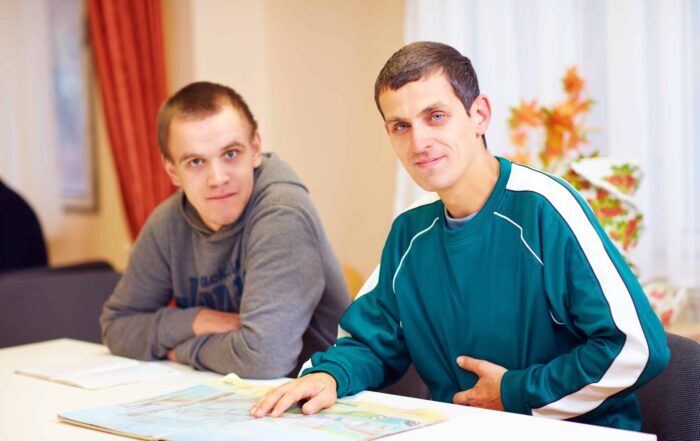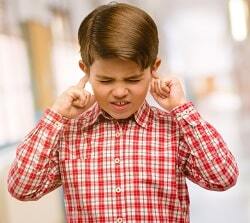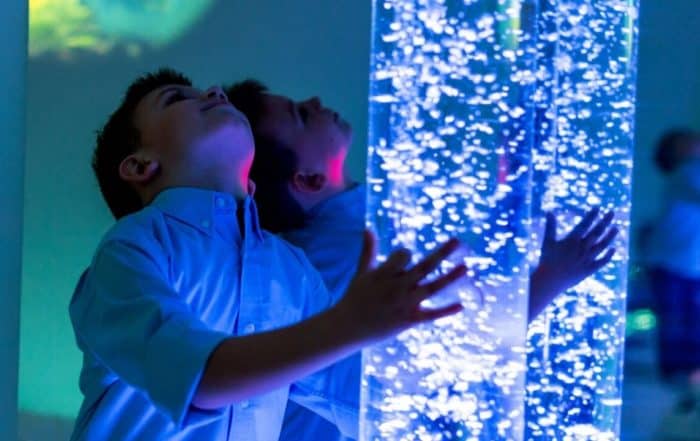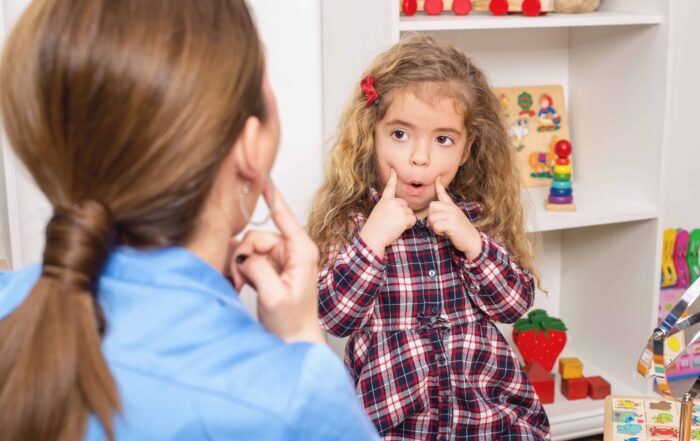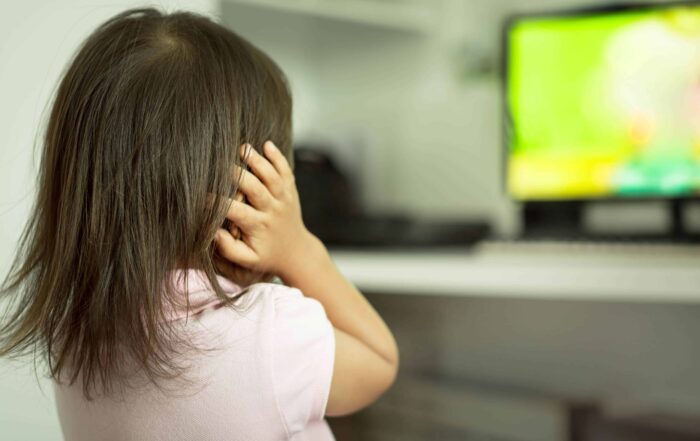Fakhri Shafai, Ph.D., M.Ed., discusses sensory differences experienced by individuals with autism across the lifespan. She describes atypical neuronal migration and synaptic pruning and outlines how such differences in brain development lead to sensory issues in autism. Dr. Shafai uses relatable analogies to discuss complex topics and highlights the lack of adult sensory symptom studies across the field. She defines crucial brain regions, the eight sensory systems, and current limitations to the discourse. Before opening the floor to questions, Shafai touches on future directions for research and resources and provides practical examples of sensory toolkits and programs.
Take the knowledge quiz for this webinar HERE
Handouts are online HERE
Watch Part 2 Sensory-Friendly Strategies for Home, recorded Wednesday, March 23, 2022, HERE
In this webinar:
2:03 – Sensory processing
5:40 – Optimal attention and arousal window
9:04 – Hyper- and hypo-reactivity
11:00 – Sensory quotes
12:15 – Homunculus visual
13:15 – Sensory receptors in the skin
15:00 – Layered brain development
16:05 – Analogy: atypical neuronal migration
18:35 – Synaptic pruning
20:05 – Analogy: forest of synapses
21:50 – Distant synapses and sensory issues in autism
24:30 – Multisensory integration
28:00 – Auditory system and aging
29:45 – Visual system and aging
30:50 – Tactile system and aging
32:15 – Olfactory system and aging
32:50 – Gustatory system and aging
35:15 – Vestibular system and aging
36:40 – Proprioception system and aging
37:48 – Interoception system and aging
39:50 – Importance of interception
42:40 – The insula and interception
43:40 – Summary of sensory processing differences
45:28 – Limitations
48:30 – Future directions: research and resources
50:40 – Programs, toolkits, and final thoughts
52:48 – Q & A
Summary
Sensory processing difficulties are a diagnostic feature of Autism Spectrum Disorder as described in the DSM-V (3:15). In fact, between 93% and 96% of individuals with autism experience sensory processing differences “to such an extent that they significantly impact daily functioning” (4:00). Dr. Shafai emphasizes that sensory difficulties continue across the lifespan, although studies generally focus on children and youth (4:30).
The speaker defines the optimal attention and arousal window (OAAW) as when we are “both alert and calm depending on what’s happening” (5:40). When we dip below or above this window, we can adjust our sensory environment to offset the unbalance (6:15). However, for individuals with atypical sensory processing, the highs and lows are more extreme (8:00) and can lead to hyper- or hypo- reactivity (9:04). Dr. Shafai discusses sensory receptor types and concentrations (12:15) throughout the body and shares quotes about painful sensory experiences from autistic adults (11:00).
The presenter details two crucial steps in brain development and how they differ in individuals with autism:
- Atypical neuronal migrationDr. Shafai relates layered brain development to traveling from sea level through higher elevations (16:05) and describes how each new ecosystem (layer) contains plants and animals (neurons) specifically adapted for that environment. When plants or animals (neurons) move to higher elevations (layers), they can interrupt the balance of a new ecosystem. Such atypical neuronal migration (17:50) is evident in some individuals with autism within the first three months in the womb.
- Synaptic pruning (18:35)
Humans are born with billions of synapses or connections in the brain where neurons talk to each other (15:40). As we develop, the brain removes synapses we do not need (synaptic pruning), much like a forest path will expand given the necessary resources or disappear when people stop using it (20:05). However, the brains of some individuals with autism maintain extra pathways between cells that are close to one another, minimizing energy and resources available to expand big “highways” connecting other parts of the brain (21:00).
Dr. Shafai describes how extra connections within a local sensory area create excess “noise” and make it difficult for the brain to filter out unimportant sensory information (21:50). She touches on multisensory integration (e.g., looking at a person’s face and hearing what they say) (25:20) and how weak connections between distant areas (e.g., sensory regions and social parts of the brain) make sensory comprehension in social contexts challenging (23:05).
The speaker outlines how sensory systems typically change with age and some differences observed in individuals with autism (28:00 – 42:40). She notes that our understanding of how atypical sensory symptoms change over time is limited as sensory symptoms in adults are relatively understudied (43:00).
“Autistic children eventually grow into autistic adults. And we need to be able to recognize that challenges don’t go away” (44:50).
The presenter discusses limitations (45:28) and future directions for research (48:30) and resource development (50:08). Dr. Shafai provides examples of successful collaborative sensory programs and tool kits (50:40) and closes with a Q&A session covering social skills, sensory difficulties in war zones and natural disasters, picky eating, sensory integration and neuroplasticity, OT specialists, self-regulation, and much more (52:48).
About the speaker:
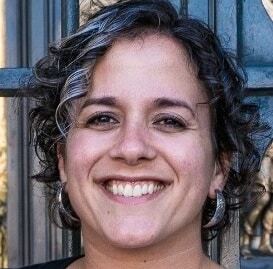 Since 2003, Dr. Fakhri Shafai has worked with autistic persons, their families, clinicians, and educators in various capacities. Her research is focused on sensory processing differences in autism spectrum disorder and how these differences are related to social competence, emotion processing, and anxiety. Currently, she works as the Research and Evaluation Project Coordinator for AIDE Canada, a federally-funded nonprofit that seeks to support autistic individuals, individuals with intellectual disabilities, and their families.
Since 2003, Dr. Fakhri Shafai has worked with autistic persons, their families, clinicians, and educators in various capacities. Her research is focused on sensory processing differences in autism spectrum disorder and how these differences are related to social competence, emotion processing, and anxiety. Currently, she works as the Research and Evaluation Project Coordinator for AIDE Canada, a federally-funded nonprofit that seeks to support autistic individuals, individuals with intellectual disabilities, and their families.
Check out AIDE Canada’s Interpreting Social Situations Interactive Video Course
Take the knowledge quiz
Can’t see the quiz below? Take it online HERE
Effective Coping Strategies for Sensory Differences and Executive Function
Drs. Greg Wallace and Goldie McQuaid share their research on strategies autistic adults develop to compensate for non-social challenges they experience, including sensory sensitivities and executive function differences. Handouts are
Sensory Considerations for Social Communication
Printable handouts are online HERE Presented by: Vanessa Rentschler, Au.D., CCC-A, C.A.S. is a clinical audiologist and owner of Audball Paradigm, LLC (private practice) who
Sensory issues may be a factor in substance use in individuals with autism
Sensory issues may play a role in elevated levels of substance abuse in individuals with autism spectrum disorders (ASD), according to a new study from the Netherlands. Frank van den Boogert and
Pain, Sensory Issues and Autism
Dr. Tami Bar-shalita, Merry Kalingal Levi, and Dr. Yelena Granovsky explore the intricate connections between pain, sensory perception, and autism. They discuss quantitative and qualitative research findings that shed light on the
Editorial: Revisiting Two Lesser-Known Teaching Strategies to Enhance Speech Production in Autism
In this editorial, I would like to shed light on two methods for improving the speech production of individuals on the autism spectrum, discuss potential neurological factors that may underlie their effectiveness,
Study investigates responses to pain in individuals with autism
A new study offers insights into the responses of adults with autism spectrum disorders (ASD) to painful stimuli. Tseela Hoffman and colleagues investigated pain perception in 104 adults, 52 of whom were


